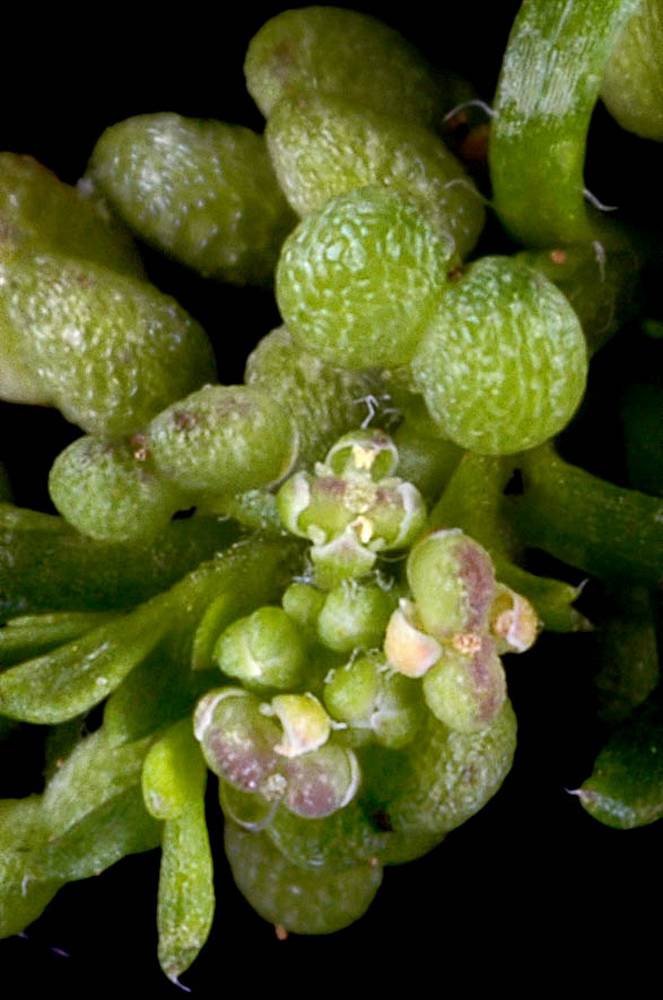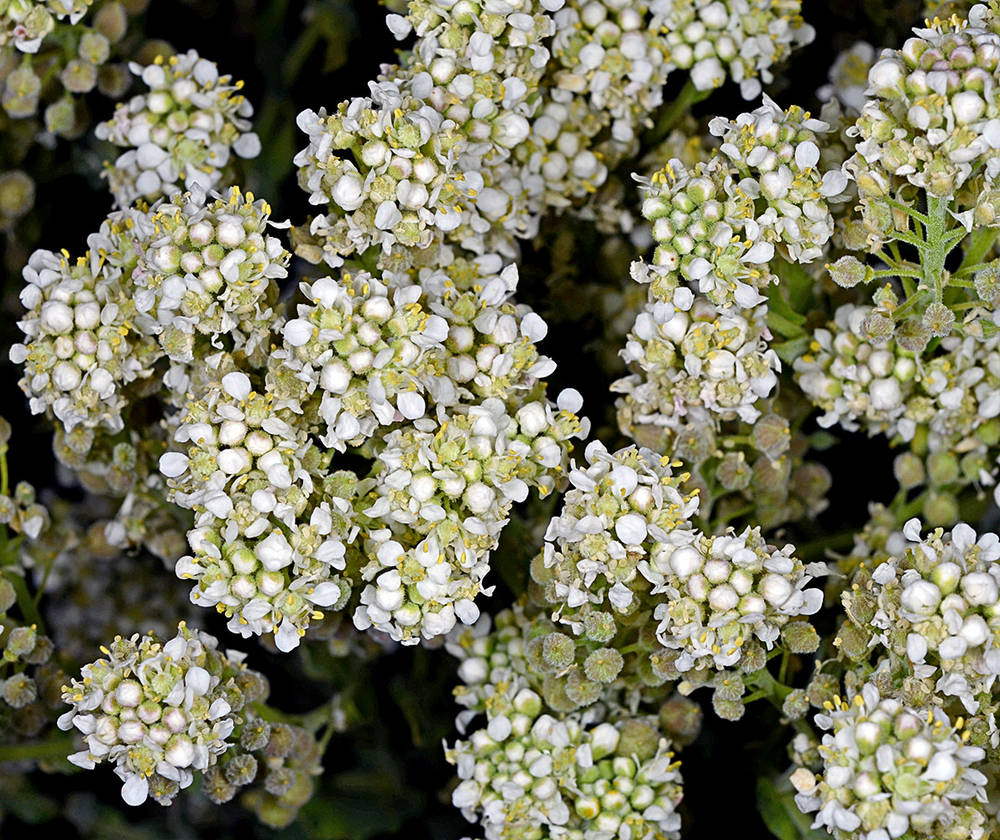Lepidium didymum
Lepidium
lesser swinecress, lesser wartcress
cress, peppercress, peppergrass, pepperwort
often decumbent, 1–4.5(7) dm.
not rosulate, 1–6(8) cm, 1- or 2-pinnatisect;
lobes entire or dentate, sometimes deeply lobed;
petioles 0.5–4(6) cm.
rosulate or not;
margins entire, dentate, or 1–3-pinnatisect.
similar to basal, 1.5–3.5(4.5) × 0.5–1.2 cm, bases not auriculate, petiolate to subsessile.
bases sometimes auriculate or amplexicaul, petiolate or sessile.
rachises glabrous or pubescent with straight cylindrical trichomes, fruiting pedicels divaricate to horizontal; terete; straight or slightly recurved, 1.4–2.5(4) mm, glabrous or sparsely pubescent adaxially.
bracts 0.
sepals caducous, 0.5–0.7(0.9) mm;
petals elliptic to linear, 0.4–0.5 × ~0.1 mm, white;
stamens 2; median;
styles absent or obsolete, included in apical notch.
radially symmetric;
sepals ovate or oblong;
lateral pair not saccate;
petals sometimes rudimentary or absent;
blades white, yellow, pink, or purple, obtuse or emarginate;
claws absent or distinct, nectar glands 4 or 6; distinct; median glands often present;
stamens 2 or 4 and equal in length;
lateral or median, or 6 and tetradynamous;
anthers ovate or oblong;
filaments unappendaged;
ovules 2 per ovary;
septa complete or perforated;
styles absent, obsolete, or distinct;
stigmas capitate; entire or rarely 2-lobed.
indehiscent, didymous, 1.3–1.7 × 2–2.5 mm; apical notch 0.2–0.4 mm deep;
valves thick, rugose, glabrous, strongly veined; wingless.
dehiscent, schizocarpic, or indehiscent silicles, angustiseptate or rarely inflated and terete, unsegmented, apically winged or wingless; replums rounded.
ovate, 1–1.2 × 0.7–0.8 mm;
cotyledons incumbent.
2(4) per fruit, 1(2) per locule, oblong or obovate; plump or flattened, usually mucilaginous when wetted, winged, margined, or wingless;
cotyledons incumbent, rarely accumbent or diplecolobal.
absent or simple.
=32.
Lepidium didymum
Lepidium
Disturbed areas, fields, pastures. Flowering May–Oct. 0–300 m. Est, WV. CA, WA; north to British Columbia, eastern Canada and US, southern US; nearly worldwide. Exotic.
Worldwide. 252 species; 18 species treated in Flora.
Based on extensive molecular and developmental studies (Bowman et al. 1999; Mummenhoff et al. 2001, 2009), the limits of Lepidium were expanded by Al-Shehbaz et al. (2002) and Al-Shehbaz & Mummenhoff (2010) to include the genera Cardaria, Coronopus, Stroganowia, Stubendorffia, and Winklera, all of which were found to be polyphyletic and nested within a more inclusive Lepidium. Lepidium graminifolium and L. ruderale have been collected on ballast, in Linnton (Multnomah County), but apparently failed to persist.
Ihsan Al-Shehbaz
Ihsan Al-Shehbaz
- Local floras:
BC,
CA,
OR,
WA
- Local Web sites:
CalFlora,
CalPhotos,
Flora NW,
PNW Herbaria
WildflowerSearch
iNaturalist (observations)
USDA Plants Database
- LBJ Wildflower Center
- SEINet
- Plants of the World Online
- Encyclopedia of Life
- Wikipedia
- Google Image Search




